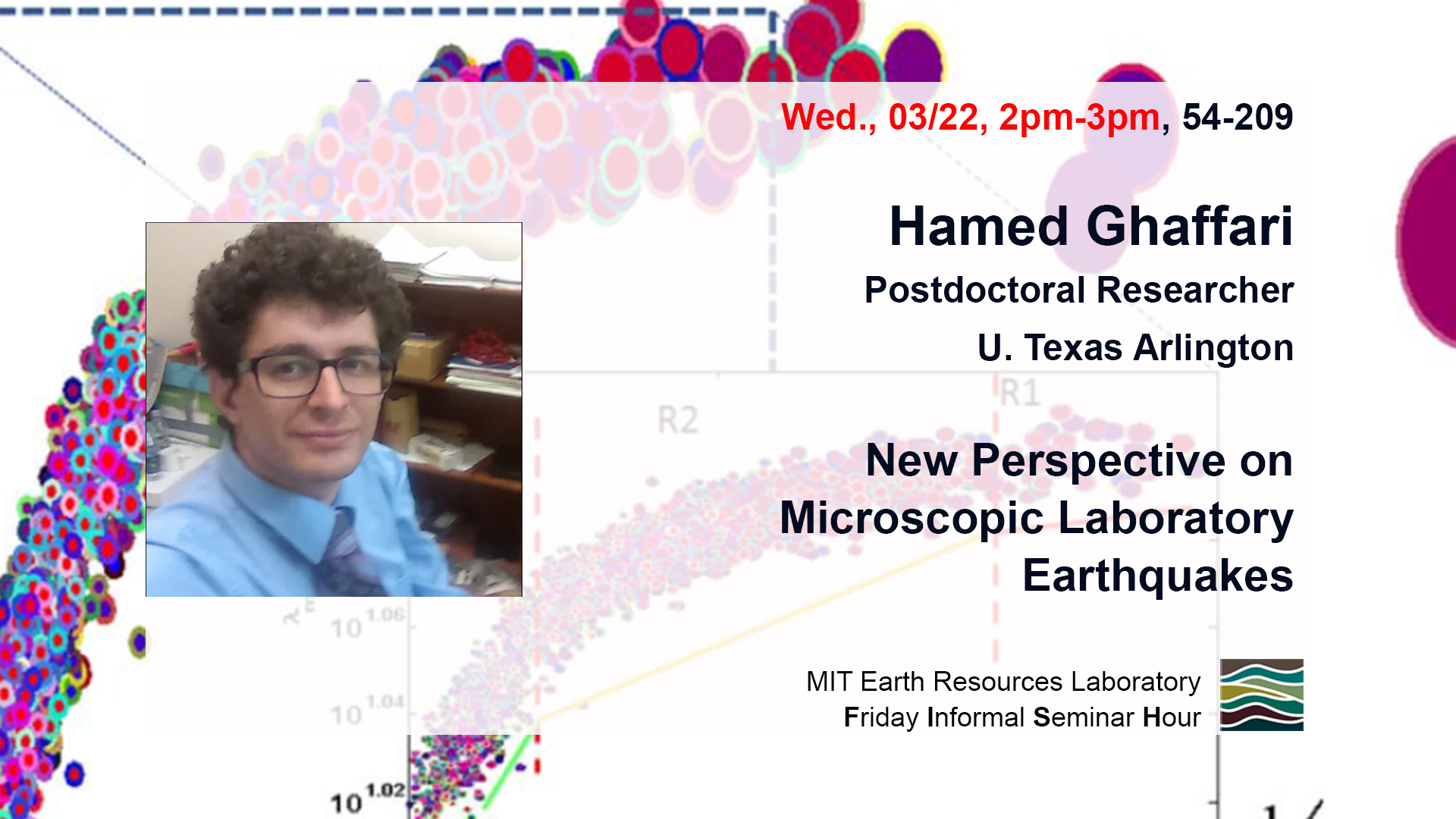Speaker:

Dr. Hamed Ghaffari, Postdoctoral Researcher at U. Texas Arlington, presents "New Perspectives on Microscopic Laboratory Earthquakes:
Out-of-Equilibrium Mechanism and Soliton Excitations".
"Characterizing the fast evolution of microstructural defects –which result in emitting acoustic phonons- is key to understanding “crackling” phenomena during the deformation of brittle solid materials. For example, it has been proposed using atomistic simulations of crack propagation in elastic materials, that the formation of a nonlinear hyperelastic or plastic zone around moving crack tips controls crack velocity. To date, progress in understanding the physics of this critical zone has been limited due to the lack of data describing the complex physical processes that operate near microscopic crack tips.
In this talk, I introduce a novel method to study the processes occurring in the critical zone around a propagating crack tip by monitoring acoustic emissions from spatially distributed transducers and mapping the recorded emissions on spin-like systems. I will discuss several aspects of these multi-array acoustic sensors focusing on emitted noise from cracking excitations in the course of conventional triaxial tests and true-triaxial test on rock samples, and nano-indentation experiments on ultrathin sheets of crystals. I demonstrate how complexity of the source and onset of plasticity are reflected in the dynamic structure of mapped acoustic sensor-networks. Studying correlations between sensor states shows the mechanisms which govern the real time evolution of the system: formation, propagation and annihilation (collision) of local rupture fronts (i.e., kink-pairs or solitons). I also show the existence of slow (200 m/s) to supersonic propagation (19 km/s) of local non-linear excitations in the introduced system. Furthermore, the results unravel a peculiar relaxation mechanism after inducing an impulsive stress-ramp. I demonstrate that through relaxation, the system crosses a quasi-steady state -akin to recent observation of the pre-thermalized phase- prior to reaching long term relaxation phase where bounded state of kink-pairs (known as breathers) are frequent, yielding very slow motion of “coda” part of excited waves. I illustrate that the stability of the pre-thermalized like phase is associated with extension and temporal merging of a major fraction of the domain-walls that spans the system. This intermediate enigmatic state delays the long term healing of the fractured matter, implying a potential weaker interface. These results yield important insights into dynamics of fast relaxation regimes in “laboratory earthquakes” necessitating a revision of the well-known rate-and state friction laws; the results open new horizons for understanding the role of incipient plasticity in microscopic dynamic failure, and, more generally, non-equilibrium relaxation of many body systems. "